


by Rainer Knaak
1) Philidor Defence - updating CBM 172
1.e4 e5 2.Nf3 d6 3.d4 Nd7 4.Bc4
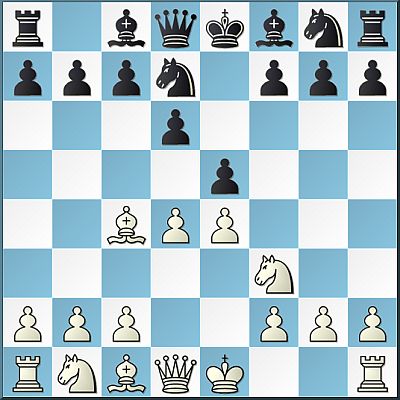
Here too White has made only normal moves and with two moves Black can fall into the trap. A) 4...h6? is played relatively infrequently and the refutation is also not seen so often: 5.dxe5 dxe5 6.Bxf7+! Kxf7 7.Nxe5+ Kf6 8.Nc3!! (not 8.Qd4 c5) intending 8...Bb4 9.Qd4 c5 10.Qd6 mate.
B) 4...Be7? is played incredibly often; after 5.dxe5 Nxe5 6.Nxe5 dxe5 White wins a pawn with the double attack 7.Qh5.
2) Sicilian Defence - updating CBM 191
1.e4 c5 2.Nc3 Nc6 3.Bb5 Nd4 4.Nf3 g6 5.Bc4 Bg7 6.Nxd4 cxd4 7.Qf3

Anyone who does not know the theory will perhaps avoid 7...Nh6 on account of 8.d3 and in the event of 7...Nf6 fear 8.e5. In reality both knight moves are playable, but the apparently safer and frequently played 7...e6? turns out to be counter-productive. After 8.Nb5 d6 9.Qa3! there are problems around d6, e.g. 9...Ke7 10.c3! dxc3 11.dxc3 a6 12.Bb3! Rb8 13.Na7 or 12...Qb6 13.Bf4! e5 14.Rd1+-.
3) Sicilian Defence - updating CBM 192
1.e4 c5 2.Nc3 Nc6 3.Bb5 Nd4 4.Nf3 e6
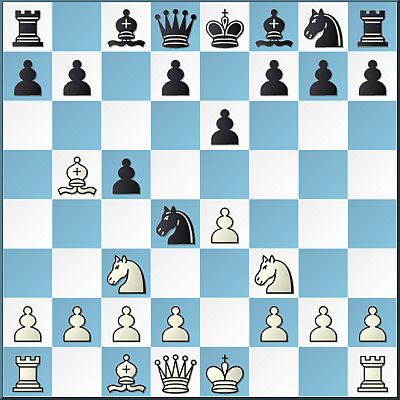
With three pieces already developed White appears to be completely safe, but the rush of blood to the head 5.Nxd4? cxd4 6.Ne2 nevertheless backfires. Black has available to him the double attack 6...Qg5! and wins a pawn, with White’s compensation in the form of better development being insufficient.
4) Sicilian Defence - updating CBM 193
1.e4 c5 2.Nf3 d6 3.d4 cxd4 4.Nxd4 Nf6 5.f3 e5 6.Bb5+ Bd7 7.Bxd7+ Qxd7 8.Nf5 d5 9.Bg5 dxe4 10.Bxf6 Qxd1+ 11.Kxd1 gxf6 12.fxe4

The trap begins with 6.Bb5+!? (instead of 6.Nb3) and on move six or seven Black could go to d7 with his knight. But 6...Bd7 and 7...Qxd7 are most often played in practice. 9...dxe4? is also very clearly preferred (9...d4 is still okay), but with it Black has finally fallen into the trap, because in the endgame White has several advantages: mobile queenside majority, the knight is stronger than the bishop and generally speaking a better pawn structure.
5) Sicilian Defence - updating CBM 173
1.e4 c5 2.Nf3 e6 3.d4 cxd4 4.Nxd4 Nc6 5.Nc3 Qc7 6.g3 a6 7.Bg2 Nf6 8.0-0 Be7 9.Re1
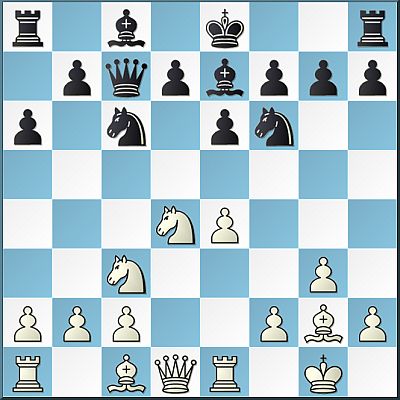
These are all standard moves, but now there are two ways for Black to fall into the trap. The mistake A) 9...Nxd4? is usually met with the recapturing with the queen, but in doing so White misses the enormous chance 10.e5!. A typical continuation would be 10...Nb5 11.exf6 gxf6 12.Nd5! exd5 13.Bxd5 with a resounding attack.
There is the far more “popular” B) 9...d6?! 10.Nxc6 bxc6 11.e5! dxe5 12.Rxe5 0-0 13.Bf4 and 13...Bd6? fails to 14.Rxe6!, whilst 13...Qb7 14.Na4 gives White a nice positional advantage on the queenside.
6) French/Queen's Gambit Accepted - updating CBM 189
1.e4 e6 2.d4 d5 3.exd5 exd5 4.Nf3 Bd6 5.c4 dxc4 6.Bxc4 Nf6 7.0-0 0-0 8.Nc3

The move 8...Bg4? is now extraordinarily tempting and is in fact very common in practice. But after 9.h3 Bh5 10.g4! Bg6 11.Ne5! White threatens 12.f4 and the principled 11...c5? fails to 12.Nxg6 hxg6 13.dxc5 Bxc5 14.Bxf7+! Kxf7 15.Qb3+ Ke8 16.Re1+ Be7 17.Bf4+-. Relatively the best is 11...Nfd7 12.f4 Nb6 13.Bb3 Bxe5 14.dxe5 Bd3, but here too Black is far removed from a playable position.
7) Pirc Defence - updating CBM 197
1.e4 d6 2.d4 Nf6 3.Nc3 g6 4.Bg5 Bg7 5.e5

Even some strong players who know the trap reply 5...dxe5 6.dxe5 and then 6...Ng4. But it is very possible that White can get an advantage with 7.Qxd8+ Kxd8 8.0-0-0+! (the usual move is 8.Rd1+) 8...Nd7 9.e6! Nxf2 10.exd7. The actual trap is 6...Qxd1+? (clearly the most frequently played) 7.Rxd1 Nfd7 8.Nd5! Bxe5 9.Nf3 and White is better. In practice this is mainly followed by 9...Bd6? 10.Bxe7!+-; but 9...e6 would still be playable. Of course Black can avoid any problems with 5...Nfd7!.
8) London System - updating CBM 197
1.d4 d5 2.Bf4 c5 3.c3 Nc6 4.e3 Qb6 5.Qb3 c4 6.Qc2
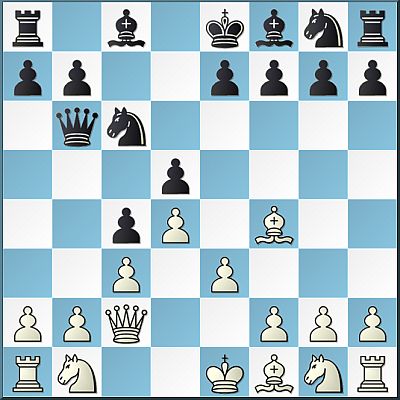
This position resembles the one in which Nf3 and ...Nf6 have been inserted, and which has been seen much more often in practice. Then the game continues 7...Bf5 8.Qc1. from the diagram many play 6...Bf5?, but that does not work here on account of 7.Qxf5! Qxb2 8.Qxd5 Qxa1, after which White plays 9.Qb5! to protect the b1-knight and at the same time to attack b7. After 9...0-0-0 10.Bxc4 e5!? All that White has to do is find one of the two winning moves: 11.Ne2! or 11.Bxe5!
9) London System - updating CBM 196
1.d4 Nf6 2.Nf3 e6 3.Bf4 b6 4.e3 c5 5.Nbd2 Bb7 6.Nc4

Usually Black does not think long for here and parries the apparent threat of 7.Nd6+ with 6...d5?!. Next comes 7.Nce5 and the correct 7...Bd6 8.Bb5+ Ke7! with only a minimal disadvantage for Black is hard to find over the board. Instead we mostly see 7...Nbd7? and after 8.Bb5 a6 9.Ng5! Black is already lost.
10) King's Indian Defence - updating CBM 186
1.d4 Nf6 2.Nf3 g6 3.b3 Bg7 4.Bb2 0-0 5.e3 c5 6.dxc5!
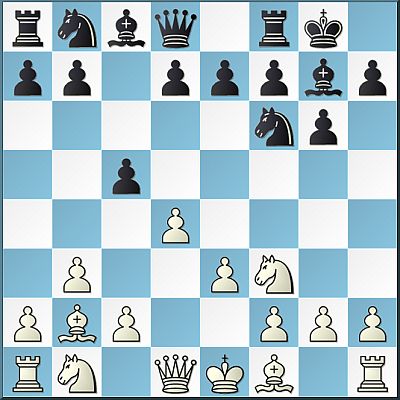
Of course Black must not play 5...c5, but it is tempting. But White now has a trick which Nakamura made popular: 6.dxc5! Qa5+ 7.c3! Qxc5 8.Ba3 and on the next move the e7-pawn falls. In return Black gets something of a lead in development but there are no good opportunities to open up the position, so in the long run the extra pawn should win through.
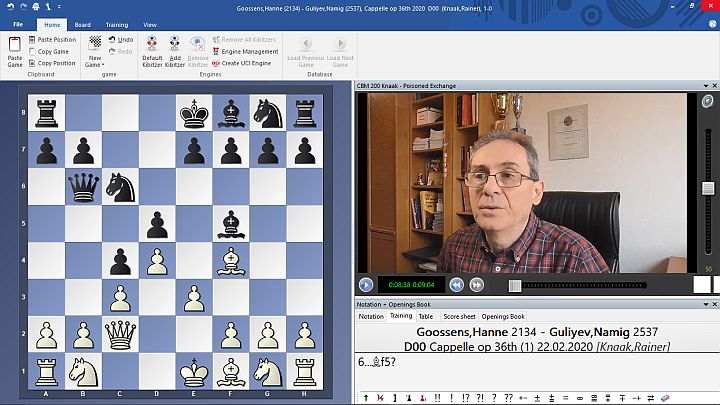
You will find the complete article with all ten traps, analyses and three videos on the DVD of CBM 200.

Take your chance and train with the experts from ChessBase Magazine. Take your chess to a new level with the help of many renowned authors!
All subscription offers and further information can be found on the ChessBase Magazine homepage.